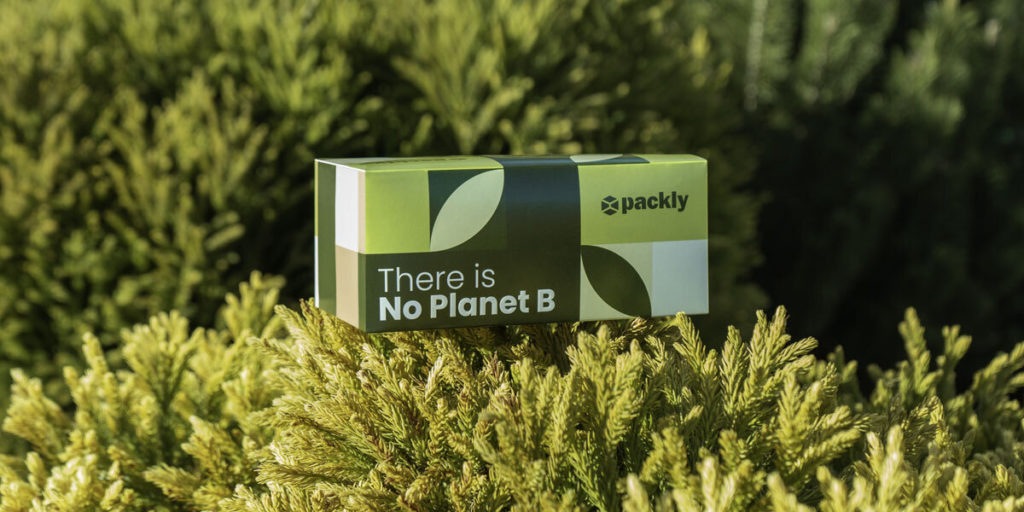The Environmental Challenge in the E-commerce Industry
Written by
Editorial TeamPublished on

The European e-commerce market is in a dynamic expansion phase, with forecasts showing a substantial increase from $599.39 billion in 2023 to a significant value of $880.70 billion by 2028. This trend represents a Compound Annual Growth Rate (CAGR) of 8% for the forecast period 2023-2028. This growth is fueled by the ever-increasing spread of the Internet, with 91% of people between 16 and 74 years in the European Union using the network, of which 75% made online purchases in 2022 (source: Mordor Intelligence).
Growth of e-commerce
E-commerce is revolutionizing the European commercial landscape, as it allows people to buy and sell a wide range of products from anywhere. In fact, the percentage of e-shops has increased from 55% in 2012 to 75% in 2022, marking a 20% increase in just ten years. This means that gradually, physical commerce is giving way to e-commerce, with many traditional stores transforming into online platforms.
Key sectors of the European electronic market include clothing, electronics, communication products, computers, and related accessories. These products constitute a significant part of e-commerce sales. Although Europe is gradually embracing online shopping, adoption has been slower compared to other regions such as the United States or China.
According to Statista, the electronics sector records the highest growth rate in terms of global online sales, with 30.3% of users making online purchases (+4% year-on-year). They are followed by the fashion sector at 28.8% (with an increase of 3.4%), beauty and health at 19.3% (with an increase of 2% from the previous year), food at 10% (with an increase of 1%), furniture at 14% (with an increase of 2%), media at 21.2% (with an increase of 3%), and hobbies/DIY at 24.2% (with an increase of 4%).
Sustainable logistics
The e-commerce sector is experiencing a significant transformation with the rise of sustainable logistics, becoming a focal point for numerous companies. This growing trend is evident in the attention paid to reducing the carbon footprint and enhancing positive environmental impact, with a particular focus on transportation and logistics operations. Companies are now more committed than ever to implementing eco-friendly strategies, which not only meet the growing demands of consumers for sustainable practices but also represent a strategic investment for the future of the sector. Thus, not only does it reduce the use of environmentally harmful materials, but it also encourages the use of renewable resources and recycled and recyclable materials. This demonstrates a commitment to sustainability and also improves the brand image in the eyes of environmentally conscious consumers. The adoption of sustainable logistics strategies offers e-commerce companies a competitive advantage. Today’s consumers are increasingly informed and inclined to support brands that demonstrate a concrete commitment to the environment.
Sustainability in logistics is not just an ethical choice but a strategic move that can drive business success. Companies that innovate in this field will be best positioned to thrive in a rapidly evolving market, where environmental responsibility becomes a fundamental pillar of commercial success.

Packaging: a strategic lever in e-commerce
In the e-commerce landscape, packaging emerges as crucial in guiding consumer perception. The combination of visual presentation and packaging practicality can have a significant impact on purchasing decisions.
Packaging, considered as a marketing and communication tool, cannot ignore this evolution. Many realities require, in fact, packages designed specifically for online sales, along with customized needs. These realities vary from operators who purchase goods in stock to manufacturers of objects. In all these situations, customized packaging is essential.
Packaging intended for e-commerce plays a partly different role compared to that conceived for sale in physical stores, as the customer will have access to the package only after making the purchase and receiving the shipment.
Innovative and sustainable strategies in supply chain management
The supply chain is a vital element in the e-commerce ecosystem, involving all aspects of the production and distribution of a product, from raw material to the final customer. In this context, the constant evolution of the market requires innovative and sustainable approaches, which are essential not only to respond to rapidly changing dynamics but also for effective management of the supply chain itself. In 2023, the supply chain management sector generated revenues of $4.29 billion, with a projected annual growth of 5.51%, bringing the market to a value of $5.61 billion by 2028. This growth underscores the importance of optimizing logistics operations and reducing waste, fundamental aspects for the operational success of companies.
In a context where sustainability has become a priority, integrating innovative and sustainable approaches throughout the supply chain is imperative. Accurate inventory management is at the heart of an efficient supply chain. Monitoring stocks in real-time, minimizing storage levels, and adopting advanced systems to predict demand are essential to avoid excesses or shortages of stock, thus ensuring a constant flow of products.

Waste reduction: sustainability and efficiency
This synergy between innovation, sustainability, and strategic supply chain management not only responds to the demands of the modern market but also represents a fundamental pillar for the growth and sustainable success of companies.
The challenges related to inventory management, logistics optimization, and waste reduction require a strategic and technological approach. However, overcoming these challenges now will offer significant opportunities to improve the overall operational efficiency of the e-commerce ecosystem.
In the constant search for operational excellence, the adoption of advanced platforms for the design and production of customized packaging emerges as a crucial piece to achieve these objectives. The customization of packaging, in terms of specific sizes and designs for each product, not only reduces material waste but also optimizes space in stock. This operational flexibility translates into a significant improvement in overall efficiency and a reduction in costs associated with superfluous packaging.
Sustainability, having become central in business dynamics, finds concrete expression in packaging platforms oriented towards eco-friendly solutions. The use of sustainable materials and environmentally friendly production practices not only meets the growing expectations of consumers, but gives companies a competitive advantage in adhering to ethical and ecological standards related to e-commerce.
The adoption of platforms for custom packaging meets the need for visual customization and plays a leading role in mitigating the problem of overpackaging and optimizing logistics processes. Customization of packaging on these platforms, indeed, allows adapting specific dimensions and designs for each product, avoiding the excessive use of materials. The reduction of overpackaging not only has environmental benefits, reducing the amount of waste generated, but also positively affects production costs and logistics. Packaging products in custom-designed packaging means using exactly the amount of material needed, avoiding waste associated with standardized packaging; this also translates into a smaller ecological footprint. The customization of packaging thus becomes a key element in the sustainable and efficient management of the supply chain, offering a dual advantage: meeting consumer needs and improving the overall operational efficiency of the company.
Conclusions
Sustainability in packaging and supply chain management will remain a strategic priority for companies, in line with growing consumer expectations and environmental challenges. Innovation in operational optimization and the adoption of eco-friendly practices will be crucial to maintaining competitiveness in the ever-evolving market.
Notes about the authors
In short: you should make your shipping packaging brilliant. Choose boxes, capacitive bags, etc., sized to fit your items without leaving too much unnecessary space. We recommend adding customized inserts to make the most of the existing space and ensure the products are well immobilized.
The shipping packaging has the function of product protection and memorability, leading to loyalty. The box must represent the uniqueness of the product purchased. It can be simple, with a pattern and gold or silver foil embellishment, but it must amaze. Choose the proper medium between firm cardboard and corrugated for heavy or fragile objects or polythene to avoid grease and stains.
Consumers are increasingly sensitive to reuse and recycling. The life cycle of shipping packaging continues when the package enters the front door. Consider alternative uses for your box, such as a small pet bed, a container for cutting and sewing tools, an organizer, etc.The best you can do is experiment and prototype as much as possible. Try different samples, run focus groups or A/B tests and optimize all strategic elements of the packaging design before printing on a large scale. Choose a partner who can accommodate a high level of customization, premium materials, fast working timelines, plus high-quality printing. Check out Packly with no minimum orders, powerful personalization capabilities, interactive 3D previews, quotes in real-time for small and large runs, and 100% eco-friendly packaging.
***

![Marketing in Europe in 2026: What's new and what hasn't changed? [McKinsey Report]](https://ecommercegermany.com/wp-content/uploads/2026/01/windows-w79mIrYKcK4-unsplash-720x480.jpg)
